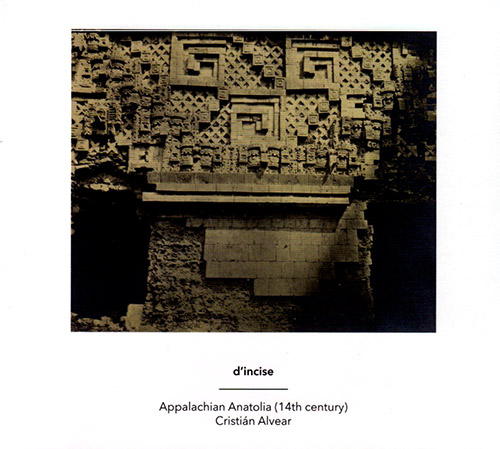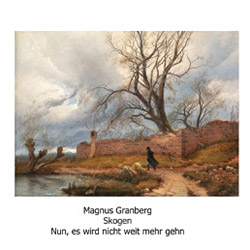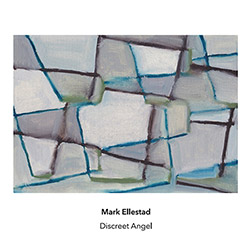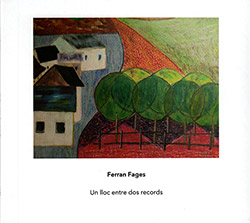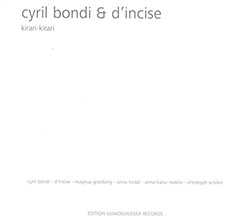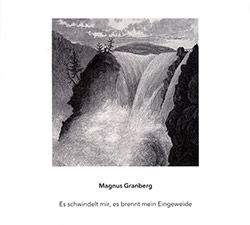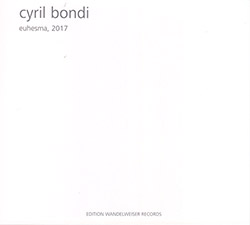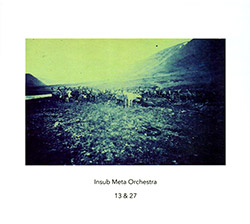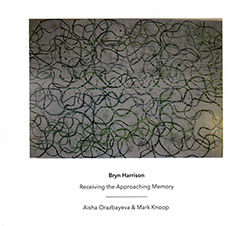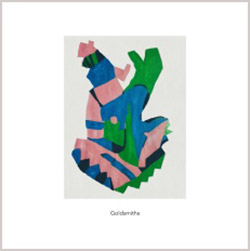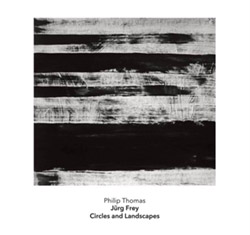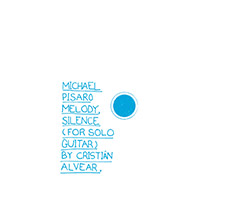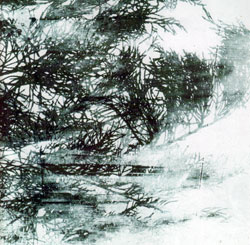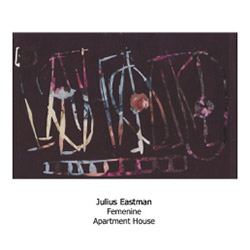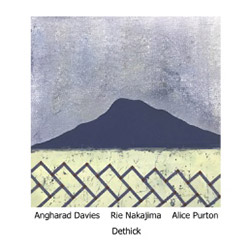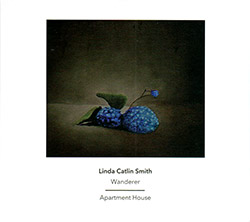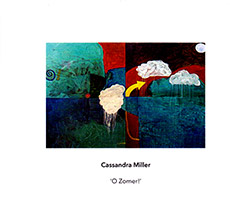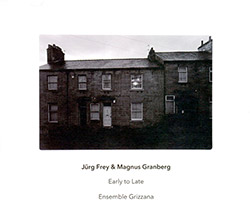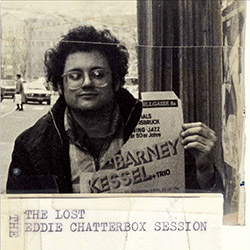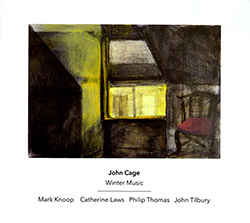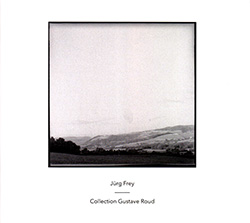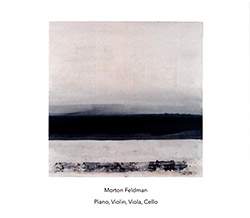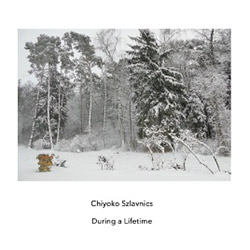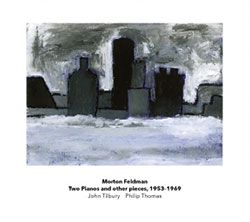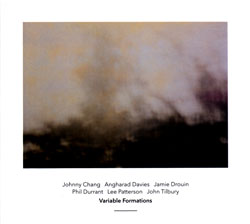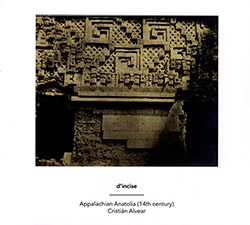
A composition for solo 'modified guitar' from Swiss composer d'incise peformed by guitarist Cristian Alvear, music "at the confluence of sound, melody and rhythm. Something quiet but somehow driven by a pulse, existing somewhere between the electroacoustic and the tonal conceptions of music."
In Stock
Quantity in Basket: None
Log In to use our Wish List
Shipping Weight: 2.00 units
Sample The Album:
d'incise-composer
Cristian Alvear-modified guitar
Click an artist name above to see in-stock items for that artist.
Label: Another Timbre
Catalog ID: at103
Squidco Product Code: 23226
Format: CD
Condition: New
Released: 2016
Country: UK
Packaging: Cardboard Gatefold
Recorded in Geneva, Switzerland, in June, 2016, by the composer.
"Appalachian Anatolia (14th century) is a compelling work of astringent beauty, one that provides an unusual perspective on the old virtuosity vs intuition debate surfacing regularly in experimental music. Hiding subcutaneous complexity beneath seemingly naïve forms, it seems set to satisfy both those who regard high levels of technical expertise as a prerequisite to opening up new possibilities in playing, as well as those others for whom such learning is a straitjacket constraining genuine innovation.
The 40-minute piece was created by the Swiss composer d'incise at the request of its performer, Cristian Alvear, despite the former having never played the guitar - an instrument with which Alvear shows an almost preternatural affinity. Unfamiliarity spurred invention, enabling d'incise to sidestep tradition and instead approach the guitar as a collection of sound sources to exploit rather than an instrument existing at the confluence of several histories of composition and performance. These explorations, and ensuing conversations with Alvear, resulted in score that specifies an alternative tuning - bottom two and top two strings tuned to E, with the middle pair at G, with three of those in just intonation - in addition to note combinations, playing instructions and even suggestions of recordings of traditional music which the performer should 'reference'.
The product of these deliberation is the strange, off-centre intervals that give Appalachian Anatolia (14th century) its detached, unearthly quality. At times, there's a seemingly disinterested quality to the arrangements of notes, arbitrary even, which seem designed to lead us away from our conventional modes of listening. In the opening minutes, Alvear's plucks evoke the plight of the newbie guitar student vainly attempting to get two strings in tune, their semi-tonal chimes steadfastly refusing to merge in unison even as they transform from nagging irritation into balletic mantra. Things gather momentum as the piece progresses, with clusters of picked notes and struck harmonics tumbling from the guitar like tarnished coins tossed into an empty well. But these groupings still seem awkward, lopsided, somehow, the combination of tuning and score leading Alvear away from familiar harmonic patterns and instead playing with the exploratory freedom of a child encountering the guitar for the first time. For the listener, the experience is akin to gazing on the twisting filaments of a Naum Gabo sculpture, its impossible shape seeming to change when viewed from different angles, the delicacy of the interconnected tendrils hiding an underlying tensile strength.
The fact that this freedom is a condition, both of the structure imposed by d'incise's score and by Alvear's own incredible level of skill, does not in any way lessen its peculiar power. Both artists have distilled their considerable expertise - the years of study, of reflection, of playing, of composition - into the clear, crystalline forms of Appalachian Anatolia (14th century), transforming it from a piece of composed music into a kind of incantation. Listening becomes an act of devotion, a step into the eternal. Not so much an escape from a hostile world as a meditation, enabling us to face its ravages anew."-We Need No Swords blog
Interview with d'incise
'Appalachian Anatolia (14th century)' is a bizarre title. Could you explain the thinking behind it?
It's a kind of collage-style title that I have used a few times recently, especially for scored pieces (such as "May my wrongs create no trouble (soft, soft and)" or "Ukigusa (the sky is as blue as a tragedy)".
I like words, and this title space that we're given as musicians is a space I fancy playing and experimenting with, a poetic parallel. But to clarify this particular title (and the others also have clear roots, in Henry Purcell and Yasujirō Ozu), the "Appalachian Anatolia (14th century)'" score makes reference to a list of "traditional" music recordings, among which you'd find banjo, saz and baroque music.
The piece certainly suits Cristian Alvear's style of playing. Did you compose it with him in mind?
Yes, in fact it was Cristian who first asked me to imagine a piece for him. It was quite a challenge to think about an instrument that I'm absolutely not familiar with. He first gave me some clues about the construction of the instrument, some small details to which I had never paid attention before. Our chat led me finally to the idea of modifying the set-up of the strings, which was also a way for me to simplify the instrument, to bring it down to my electroacoustic level of understanding.
On the one hand I wanted to make a piece with some clear and precise instructions. On the other I wanted to push Cristian a bit outside of what I knew of his usual playing, perhaps something more "on the edge", or at the confluence of sound, melody, rhythm. Something quiet but somehow driven by a pulse, that was again a confluence between the electroacoustic and the tonal conceptions of music. It turned out that that was what Cristian had been expecting me to do.
But when the piece took shape, it became obvious that it was a work that might also be interesting for other guitarists to confront. That's why I asked Clara de Asis, a young musician living in Marseille, to attempt it on electric guitar. I'm glad because this process revealed very well the balance in the piece between its own fundamental core character, and the interpreter's touch and input. This a point that is very important for me in such work.
I know that you have a long background in improvised music. When did you start to write compositions, and why do you think that you have moved in this direction?
I guess composition was always present as an inspiration, especially in my electroacoustic work. But it's mostly through the evolution of the Diatribes duo, with Cyril Bondi, that it became a stronger issue (with the piece "Roshambo", for example). "Ilhas", for snare drums and loudspeaker, was another milestone. I also began playing scored pieces by other musicians such as Stefan Thut or Magnus Granberg. So, in answer to when I began writing compositions, the answer is a couple of years ago.
Basically I'm trying to find a specific characteristic for each of my projects. I see composing - on paper or verbally - or improvising as tools which allow the revelation of certain forms, colours, or whatever is "unique" to a piece of music. I'm definitely improvising less than I used to, and certainly not in the same way - recently in improvised contexts I've been challenging myself by using a very limited amount of options.
I see composition mainly as an opening to new possibilities. With the search for clarity in what I or we do, came the desire for a better formulation of my or our music. And working on its potential of transmission via a score is a very stimulating mind game.
Anyway "Appalachian Anatolia" is a new step, in that it's a piece I couldn't play myself.
In the score of 'Appalachian Anatolia' you specify that the interpreter must listen 'a lot of times' to certain specific recordings - mainly of various 'traditional' folk musics, but also pieces by Guillaume de Machaut and Neil Young - and instruct the interpreter to 'refer to' elements from these traditional musics in their interpretation, though not in an obvious way. How do you think Cristian took these references on board in his playing, and was it the kind of use of that material that you were hoping for?
The transposition is not obvious in Cristian's version, which is a good thing, I guess, and I chose not to ask him how exactly he proceeded. When we met we focused more on the overall form of the piece.
This part of the score is a bit paradoxical, and I wanted it that way, counterbalancing the precise tuning and the limitation of material available. I see a tension between this limitation and a theoretical infinity of realisations.
All these musics had a strong impact on me at some point, especially in their traditional aspects - and I would consider the "western/desert movie guitar style" of Neil Young in Jarmush's "Dead Man" as a form of (newer) tradition. I wanted to see how a bridge could be built between these traditional musics which had impressed my younger self, and my own current experimental music. This a field of work which I wish to continue to explore, perhaps making the references more apparent.
There are a few elements you can notice in both Cristian and Clara's approaches, but I think that in both cases the influence of these musics led to a piece with a coherence, a sort of ritual mood, and also a feeling of the vernacular, as if this modified guitar, a new instrument, was also a very old one....which in fact it is.
So will you compose for the guitar again - or indeed for other instruments that you can't play yourself? Has writing this piece given you the hunger and the confidence to extend the range of your compositional work? What are your plans?
I don't know about the guitar, but for sure I'll be composing pieces for other instruments. The work with Cristian was very encouraging in this respect and there's still so much to learn and experiment with. I very much like those forms of dialogue or collaboration between the knowledge and background of an instrumentalist on the one hand, and the conceptual input of a composer on the other. That's how I see the relation between composer and interpreter, as a horizontal interaction.
I've started to plan a double bass solo, which was requested by Félicie Bazelaire from Paris (in relation with other solo pieces by Bertrand Denzler and Patrica Bosshard). I'm also putting the last touches to a vibraphone piece for two players (I'll be playing on this one - or at least pretending that I can).
Beside all that I'm busy developing a new "proto-techno" project, called Tresque, playing with our traditional-experimental repetitive band La Tène (with Cyril Bondi and Alexis Degrneier), some ideas for more stricly electroacoustic works, and I'm continuing to push the boundaries with Diatribes, my longstanding duo with Cyril Bondi, among many other things.

The Squid's Ear!
Artist Biographies
• Show Bio for d'incise "Laurent PETER, a.k.a. d'incise (Geneva, 1983), drifting musician, grew up inbetween dub sound system and experimental electronic music. Sound explorer, he has no perticular instrument, using whatever can be considered as such, softwares, recordings, objects, percussions, harmonium, etc. He's interested in radicalism, reductionnism, repetitions and conceptual approaches, building specific set-up for each new occasion, in improvised or composed context. He tends to extract the most tiny details of the elements, appreciates slowness and obsessive explorations of simple processes. He's, since many years with Cyril Bondi, behind the INSUB. label, orchetra, the Diatribes duo, and many other things, and does graphic designs." ^ Hide Bio for d'incise • Show Bio for Cristian Alvear Chilean musician dedicated to the performance, premiere and recording of new music. He serves as co-curator of the Experimental Music Festival Relincha, in Valdivia, Chile. Since the beginning of his career he has been constantly performing in the main auditoriums and concert halls of his country, as well as international festivals and concert venues. In recent years he has concentrated its efforts in performing educational concerts in rural areas of the Los Lagos region, in Southern Chile. His work has been published by edition wandelweiser records (germany), irritable hedgehog (usa), cathnor (uk), rhizome.S (france), potlatch (france), 1000fssler (germany), lengua de lava (mexico), caduc (canada), melange editions (japan), b-boim records (austria) and erstclass (usa)." ^ Hide Bio for Cristian Alvear
4/24/2024
Have a better biography or biography source? Please Contact Us so that we can update this biography.
4/24/2024
Have a better biography or biography source? Please Contact Us so that we can update this biography.
Track Listing:
1. Appalachian Anatolia (14th Century) 39:20
Compositional Forms
Guitarists, &c.
Solo Artist Recordings
New in Compositional Music
Last Copy of Items that will not be restocked...
Search for other titles on the label:
Another Timbre.

